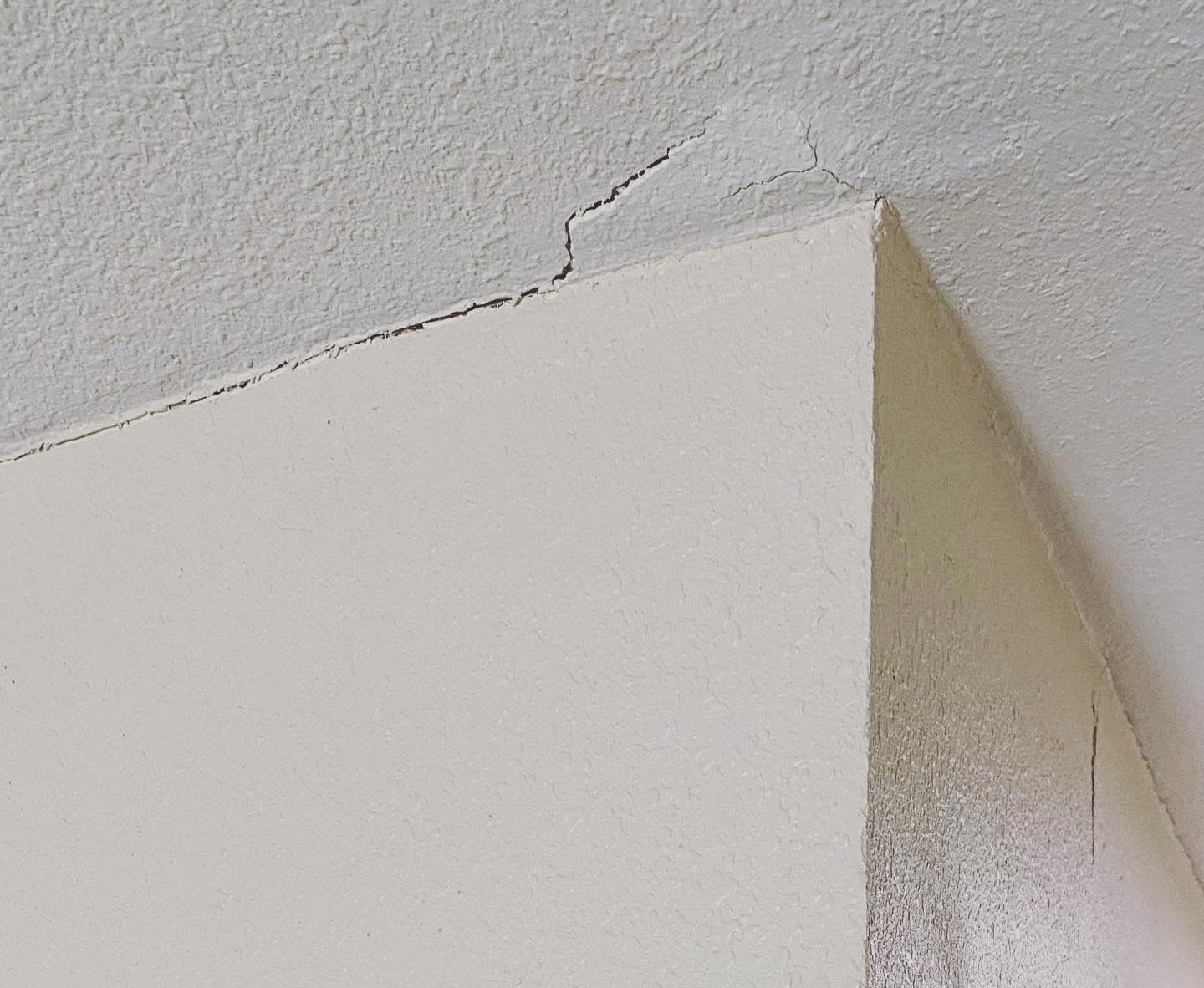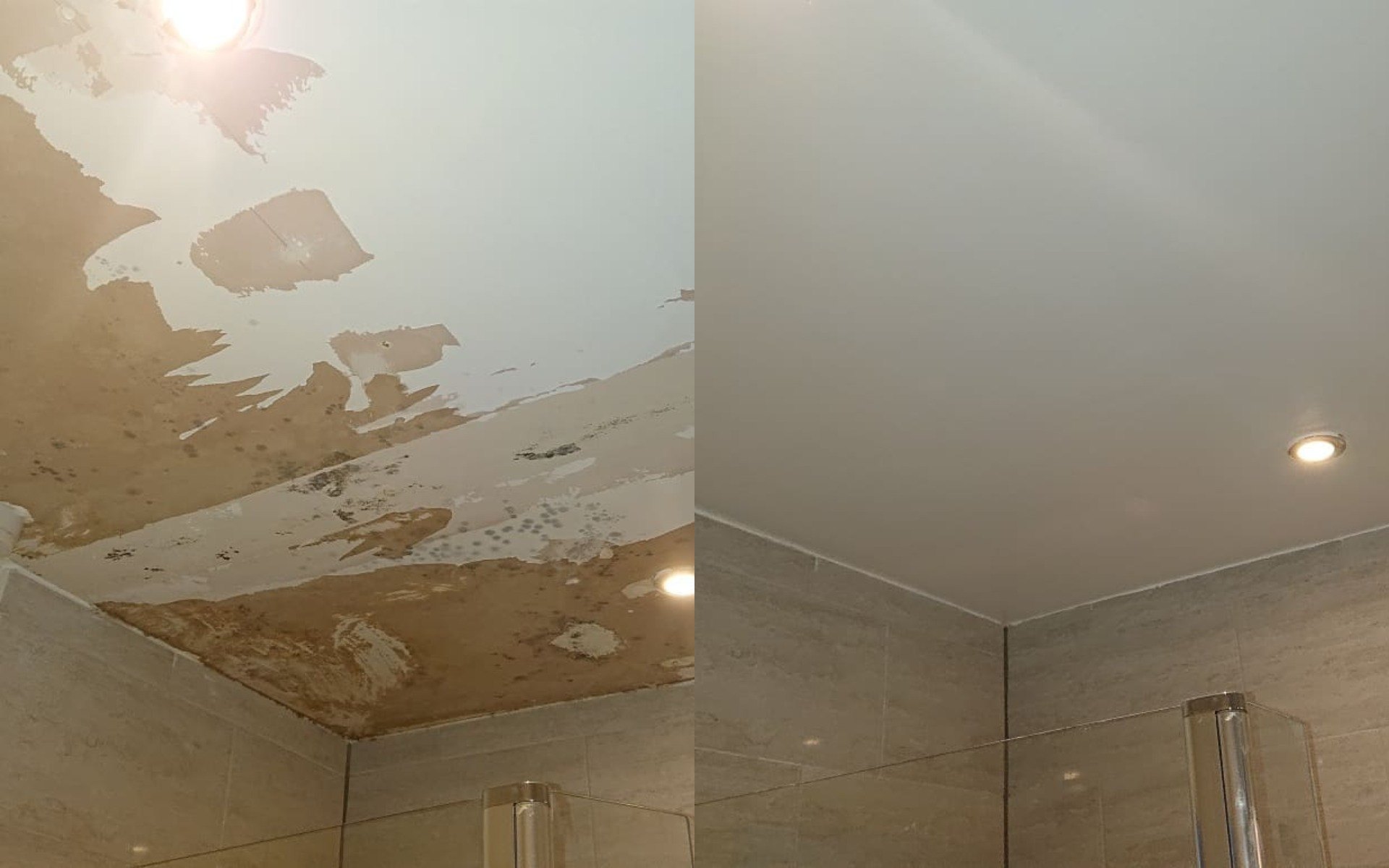Causes of Bathroom Ceiling Paint Cracking

A cracked bathroom ceiling is an eyesore, but it’s more than just an aesthetic problem. It can signal underlying issues with moisture, temperature, or even the ceiling material itself. Understanding the root causes of this problem is crucial for finding the right solution and preventing future cracks.
Moisture and Temperature Fluctuations
The bathroom environment is particularly challenging for paint. Frequent hot showers and baths create a humid atmosphere, leading to moisture buildup on the ceiling. This moisture can seep into the paint, causing it to expand and contract as it dries and re-moistens. This constant expansion and contraction puts stress on the paint, eventually leading to cracks. Temperature fluctuations also play a role. When hot steam from showers hits a cold ceiling, the rapid temperature change can cause the paint to crack.
Impact of Poor Ventilation
Poor ventilation is a major contributor to bathroom ceiling paint cracking. When moisture from showers and baths isn’t adequately removed, it can linger in the air, increasing the humidity levels. This excessive moisture can lead to condensation on the ceiling, which can seep into the paint and cause it to crack. Proper ventilation is crucial to prevent moisture buildup and maintain a healthy bathroom environment.
Types of Paint and Their Resistance to Cracking, Bathroom ceiling paint cracking
The type of paint used on your bathroom ceiling can significantly impact its resistance to cracking. Here’s a table outlining some common paint types and their suitability for bathroom ceilings:
| Paint Type | Crack Resistance | Advantages | Disadvantages | Acrylic Latex | High | Durable, washable, mildew-resistant | Can be susceptible to cracking if applied too thinly | Epoxy | Very High | Extremely durable, moisture-resistant | Can be difficult to apply | Oil-based | Moderate | Durable, moisture-resistant | Can be slow to dry, emits strong odor | Chalk Paint | Low | Provides a unique matte finish | Not moisture-resistant, prone to cracking |
|---|
Ceiling Material and its Role in Cracking
The type of ceiling material can also influence paint cracking. For instance, drywall, a common ceiling material, is susceptible to moisture damage. If the drywall becomes saturated with moisture, it can expand and contract, causing the paint to crack. Other ceiling materials, like plaster, are more moisture-resistant but can still be prone to cracking if the underlying structure is not sound.
Identifying the Extent of Cracking

Before you start fixing the cracks in your bathroom ceiling, it’s essential to thoroughly inspect the damage to understand its severity and potential causes. A careful visual assessment will help you determine the appropriate repair strategy and prevent future problems.
Assessing the Severity of Cracking
Understanding the severity of the cracks is crucial for choosing the right repair method. Cracks can vary in size, shape, and location, each indicating a different underlying issue.
- Fine hairline cracks: These are typically less than 1/16 inch wide and often appear as a spiderweb pattern. They might indicate minor settling or expansion and contraction of the ceiling material due to temperature changes. These cracks are usually superficial and can be easily repaired with a patching compound.
- Larger cracks: These cracks are wider than 1/16 inch and may be accompanied by gaps or movement. They could signify structural issues, such as movement in the framing or foundation. Larger cracks require more extensive repairs, possibly involving reinforcement or professional assistance.
- Cracks with movement: If the cracks are widening or shifting, it indicates an ongoing problem that needs immediate attention. These cracks might be caused by foundation movement, water damage, or improper installation.
Analyzing the Location of Cracking
The location of the cracks on your bathroom ceiling can provide valuable clues about the underlying cause.
- Cracks near plumbing fixtures: Cracks near the shower, tub, or sink could indicate water damage. Water leaks can weaken the ceiling material and lead to cracking.
- Cracks along the edges of the ceiling: Cracks along the edges of the ceiling, especially near walls, might indicate settling or movement in the framing or foundation.
- Cracks in specific areas: Cracks concentrated in a particular area of the ceiling might indicate a localized issue, such as a leak from a specific pipe or a problem with the roof.
Categorizing Cracks Based on Severity and Solutions
The following table provides a helpful overview of different types of paint cracks, their potential causes, and appropriate repair solutions:
| Crack Type | Severity | Potential Causes | Repair Solutions |
|---|---|---|---|
| Hairline cracks | Minor | Minor settling, temperature changes | Patching compound, caulk |
| Larger cracks | Moderate | Framing movement, water damage | Patching compound, mesh tape, drywall screws |
| Cracks with movement | Severe | Foundation movement, significant water damage | Structural repairs, professional assistance |
Remedies for Cracked Bathroom Ceiling Paint

Cracked bathroom ceiling paint can be a common issue, but it’s easily fixable. The key is to identify the cause of the cracking and address it before you begin repairs. This ensures that your repair lasts and that the problem doesn’t return.
Repairing Cracked Bathroom Ceiling Paint
Repairing cracked bathroom ceiling paint involves a few steps. First, you’ll need to prepare the area by scraping off any loose paint and sanding down the edges of the crack. Then, you can apply a patching compound to fill the crack and smooth it out. Once the compound is dry, you can prime the area and repaint the entire ceiling.
Here is a step-by-step guide:
- Prepare the area: Begin by cleaning the ceiling with a damp cloth and mild detergent. Allow the ceiling to dry completely before proceeding. Use a scraper to remove any loose paint or debris. You can also use a putty knife to scrape off any stubborn paint. Once the loose paint is removed, use sandpaper to smooth the edges of the crack.
- Patch the crack: There are a few different methods you can use to patch the crack.
- Spackle: Spackle is a quick-drying patching compound that’s ideal for small cracks. Apply it with a putty knife, pressing it firmly into the crack. Let the spackle dry completely before sanding it smooth.
- Joint compound: Joint compound is a more durable patching compound that’s suitable for larger cracks. Apply it with a putty knife, spreading it evenly over the crack. Let the compound dry completely before sanding it smooth.
- Caulk: Caulk is a flexible sealant that’s ideal for cracks in areas that experience a lot of movement. Apply it with a caulk gun, pressing it firmly into the crack. Smooth the caulk with a damp finger or a caulk tool.
- Prime the area: Once the patching compound is dry, prime the area with a primer that’s specifically designed for bathroom ceilings. This will help to seal the patched area and create a smooth surface for the paint to adhere to.
- Repaint the ceiling: Finally, repaint the entire ceiling with a high-quality paint that’s specifically designed for bathrooms. This type of paint is mildew-resistant and can withstand the humidity in a bathroom. Apply the paint with a roller, using long, even strokes. Let the paint dry completely before adding any trim or fixtures.
